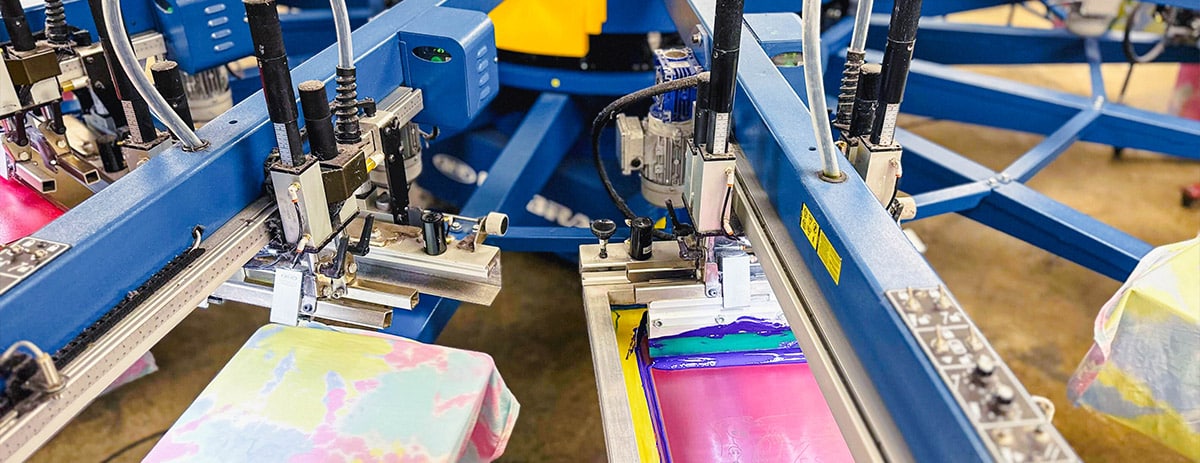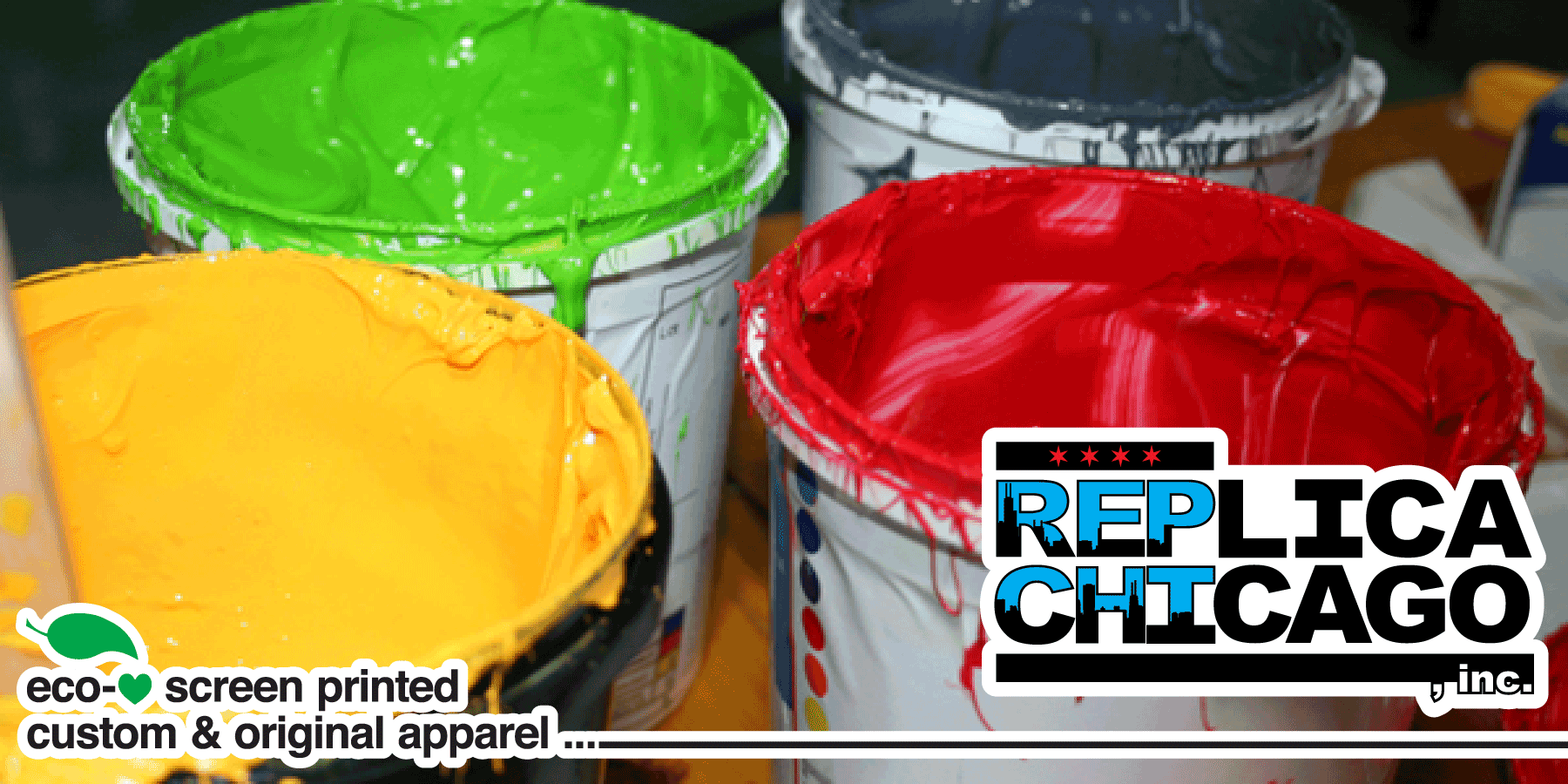Creative T-Shirt Printing Ideas for Small Brands
Display Printing Uncovered: Everything You Need to Understand About T-Shirt and Garment Printing Strategies
Display printing is a remarkable technique that integrates art with technique, supplying countless possibilities for creativity. Ready to check out the necessary aspects that make screen printing an art form?
The Fundamentals of Screen Printing: How It Works
When you plunge right into display printing, you'll find it's both an art and a science. At its core, screen printing includes creating a pattern, or display, that enables ink to pass via just in particular locations.
Next, you'll blend your inks and prepare your printing surface area. Position the display over the textile, then use a squeegee to press ink via the screen onto the garment. This procedure needs precision, as you desire clear, vibrant prints. After printing, you'll cure the ink with warm, guaranteeing it follows the textile and lasts with cleans. Each step is important, and understanding them will certainly raise your screen printing skills, changing straightforward garments into one-of-a-kind, expressive pieces.
Kinds Of Display Printing Strategies
As soon as you understand the basics of screen printing, it's time to check out the numerous strategies that can raise your layouts. One preferred method is standard screen printing, where ink is pushed with a stenciled display. This strategy is wonderful for bold, dynamic colors. There's water-based ink printing, which supplies a softer feel and is green, yet it calls for a various strategy to healing.
Another alternative is plastisol printing, understood for its resilience and dazzling colors, making it a preferred for lots of brand names. Experiment with halftone printing to produce gradient effects and detailed designs.
Essential Tools for Display Printing
To attain magnificent results in screen printing, having the best devices is basic. You'll need a strong display printing framework, which holds the mesh that moves your style onto the garment. Next off, spend in top quality squeegees; these are vital for using ink evenly across the display.
Choosing the Right Inks and Materials
When selecting inks and products for screen printing, you need to consider the kind of ink that works finest for your job. Think of textile compatibility to assure your layouts look last and excellent lengthy. Discover eco-friendly ink choices to make your printing process more lasting.
Kinds Of Display Inks
Selecting the best display ink is essential for achieving lively, durable prints that satisfy your task's demands. There are numerous sorts of display inks to take a look at. Plastisol ink is preferred for its convenience and simplicity of use, giving exceptional shade opacity on dark fabrics. Water-based ink, on the various other hand, provides a softer feeling and is environmentally friendly, making it ideal for those aiming to reduce their environmental influence. Discharge inks get rid of dye from the fabric, resulting in a soft, vintage appearance however call for specific handling. Specialty inks, such as glow-in-the-dark or metallic, can add distinct results to your styles. Evaluate your job needs and pick the ink that aligns finest with your preferred outcome.

Material Compatibility Factors To Consider
Recognizing material compatibility is vital for accomplishing premium screen prints, especially because different products react distinctively to various inks. Constantly check your inks on sample material to assure they stick appropriately and maintain color honesty. Additionally, maintain in mind that fabric weight and appearance can affect the last result, so picking the best ink and product combo is crucial for your project's success.
Eco-Friendly Ink Options
Eco-friendly inks are ending up being a preferred selection for screen printers that intend to lessen their ecological influence while maintaining high quality. When selecting inks, take into consideration water-based inks, which are much less dangerous and simpler to cleanse up compared to standard solvents. These inks bond well with materials, delivering vivid results without harmful chemicals. You could also check out eco-solvent inks that make use of fewer unstable natural compounds (VOCs), making them a more secure alternative for both your health and the planet.
Furthermore, seek inks made from renewable energies, such as soy or vegetable-based alternatives. By selecting the best inks and materials, you'll not only create sensational designs but also contribute to a much more sustainable printing process. Make the switch, and your prints will reflect your commitment to the environment!
Preparing Your Style for Display Printing

Submit Format Needs
To guarantee your layout looks sharp and dynamic on textile, you'll require to pay close focus to submit layout requirements for screen printing. Make sure your design has a clear background to prevent unwanted white edges on your prints. Keep color settings in mind; CMYK is conventional for display printing, so transform your RGB creates appropriately.
Shade Splitting Up Techniques
Shade separation is an important step in preparing your style for screen printing, and grasping it can greatly enhance your print quality. You'll need to damage your layout right into individual colors, as each shade calls for a different display throughout printing. Begin by recognizing all the shades in your style and develop layers each. You can make use of software program like Adobe Photoshop or Illustrator to separate and different shades efficiently. Be certain to conserve each layer as a different data, commonly in a format like TIFF or PSD. This accuracy not only guarantees exact shade depiction yet additionally simplifies the printing websites procedure. By taking notice of shade separation, you'll achieve specialist and lively outcomes in your screen-printed garments.
Resolution and Size
Accomplishing the very you can find out more best lead to display printing starts with assuring your layout has the appropriate resolution and size. Preferably, your artwork must be at the very least 300 DPI (dots per inch) for sharp, clear prints. If you utilize reduced resolution, your end product could look unprofessional and pixelated.
When it comes to size, think about the dimensions of your print area. Layout your artwork to match the final print dimension, ideally producing it in the real measurements you'll be publishing. This means, you'll prevent any type of unexpected scaling issues.
Always check your design in both vector and raster styles. Vector graphics can be scaled without shedding high quality, making them ideal for display printing. Preparing properly will ensure your layout looks fantastic on every garment!
Step-by-Step Screen Printing Process
Display printing is a vibrant procedure that permits you to produce vibrant styles on different surfaces. To get begun, you'll require a screen, solution, and your picked ink.
Put ink onto the display and utilize a squeegee to push the ink via the pattern onto the fabric. Raise the screen very carefully and let the print completely dry. You've successfully display printed your layout.
Tips for Successful Screen Printing Projects
While you're diving right into your display printing jobs, keep in mind that preparation is crucial to success. Start by gathering all your products-- inks, squeegees, garments, and screens. A clean work space helps avoid unwanted mistakes, so clean up prior to you begin.
Next, validate your artwork is high-resolution and properly sized for your garment. Test your screen for proper direct exposure and tidy it completely to avoid smudges. When blending your inks, comply with the maker's guidelines to attain the right uniformity.
Throughout printing, use even pressure with your squeegee for regular results. Do not rush; take your time to validate each print meets your criteria. After printing, let your garments dry entirely before managing or packaging them.
Lastly, always maintain an example of your job for future referral. This way, you can evaluate your development and improve your methods over time. Pleased printing!

Regularly Asked Questions
Exactly how Lengthy Does It Require To Establish a Display Printing Work?
Establishing up a display printing job generally takes around 30 mins to an hour. You'll prepare the screens, mix inks, and adjust the press. The time varies based upon intricacy and experience, so stay organized!
Can I Print on Different Fabric Types Making Use Of the Very Same Technique?
Yes, you can print on different fabric types utilizing the very same strategy, however you'll need to adjust your settings and inks. Some textiles absorb ink in a different way, so experimenting warranties the most effective results for each product.
What Are Typical Blunders to Stay Clear Of in Display Printing?
When screen printing, stay clear of typical mistakes like using the wrong ink, neglecting correct exposure times, or missing visit this site right here pre-press checks. Constantly check your configuration and maintain tidy screens to assure quality results each time.
How Can I Properly Tidy and Preserve My Display Printing Devices?
To correctly tidy and preserve your display printing equipment, you must frequently wash displays with appropriate solvents, examine squeegees for wear, and assure all tools are saved dry and dust-free. Consistency prevents expensive repairs and improves performance.
Is Screen Printing Eco-friendly Contrasted to Other Approaches?
Screen printing can be much more eco friendly than other methods, specifically if you use eco-conscious materials and water-based inks. By selecting sustainable products and practices, you minimize waste and decrease your influence on the planet.
Screen Printing Uncovered: Whatever You Required to Know Concerning T-Shirt and Garment Printing Methods
At its core, screen printing includes developing a pattern, or screen, that enables ink to pass via just in specific areas. Position the screen over the material, after that use a squeegee to push ink with the display onto the garment. One preferred technique is traditional screen printing, where ink is pushed through a stenciled screen.When selecting inks and products for display printing, you require to take right into account the kind of ink that works finest for your project.